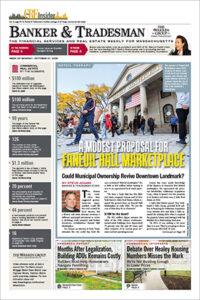Polyester ties. ATM scanning robots that give your penmanship a failing grade and reject your pathetic efforts to deposit a check. Tyrannical editors. Marginal revenue that would be lower than its corresponding demand curve, even if the corresponding demand curve slopes more steeply than a unit change of output, on a Thursday.
These are the kinds of things that destroy the Soul of Man. These are the kinds of things that will lead to the Decline and Fall of the West – especially that "editor" part.
But, for whatever reason, these are not the things that set the public agenda; these aren’t the things that lead to marching in the streets, or Tea Party rallies; these are not the things that prompt zoning commissioners to keel over dead from the horror of it all.
No, what truly makes the angels weep, what tops the list of crimes against the laws of God and laws of Man, are signs. All kinds of signs. Political signs, directional signs, informational signs, commercial signs; electronic billboards more flashy than the hooker on the corner – it makes no difference. Signs are inclined to make us crazy.
They just sit there, don’t they? They are impervious to our reactions; they are less accountable than a Democratic legislator serving his 15th term in office from a safe district.
We try to tame them. We edit them, we ban them, we limit their size and shape and degree of flickering distraction. But, next morning, there they are – another 5,398 new signs, influencing our lives, selling our homes, endorsing our candidates, and labeling our office towers, peddling our beer and pointing out the very best places to see really hot babes in a strip show.
The signs fight back. They take us to court, going on and on about the First Amendment, about how private property is, well, private – and a perfectly appropriate places for signs. The courts are littered with "sign" litigation, a tribute to their resilience and our contempt.
There are no signs so innocent, so virginal, so seemingly benign, that they do not unleash our primal anger.
Sizing Up The Issue
Even as we speak, Cambridge is at war with signs, or, more accurately, at war with itself, over a zoning change that will smooth the way for businesses to plop signs atop their tall buildings.
Until now, this kind of sign desecration required a variance from the existing, somewhat murky, zoning requirements; the signing over of your first-born son to the city council; and a recognition that God will bar you at the Pearly Gates for profaning the Cambridge skyline.
Many in the city are furious; they will apparently march on city hall, carrying signs (oops), demanding that the zoning change be dumped.
Like many zoning disputes, the details of the Cambridge case are less compelling than the grand principle: We just don’t like signs.
As any guy can tell you, size matters – but maybe not that much. In Texas, Dallas is fighting off a federal court challenge to its 2008 ordinance forbidding business signs in the upper two-thirds of glass doors or windows – and signs that cover more than 15 percent of the glass.
In Massachusetts, the Supreme Judicial Court in 2008 slapped around Somerville and Medford for attempting to limit the size of billboards on MBTA property. Other towns have since joined in the anti-MBTA billboard crusade.
In 1994, the U.S. Supreme Court flexed its muscles with a "sign case" mulling the right of a woman in Ladue, Mo., to plop an anti-Persian Gulf War sign on her front lawn. The town banned all signs in residential neighborhoods, because signs, in general, are ugly tools of the Devil. The Supreme Court affirmed her First Amendment right to have a sign on her lawn.
But, of course, the battle against signs never ends. In 2007, the State Supreme Court in New Jersey upheld the right (if not a duty direct from God) for homeowners’ associations to restrict signs (even political signs). The key: The restrictions must not be "unreasonable."
Unreasonable? We’re talking about signs. Bar the gates. Shield your eyes. The signs are coming. The signs are coming.






